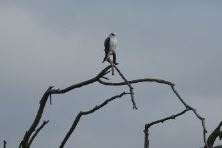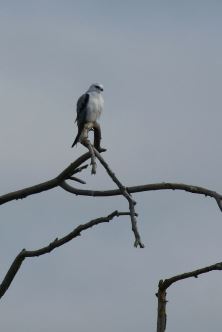
Shoppers Feedback:
Jan 17, 2017
Hello Ros,
I have now paid the invoice, but I would like to write to you just to say a big THANK YOU for getting me the Penguin!
The ChatterMate Penguin became a nice memory for me when I was in New Zealand, and I am so greatful to you for arranging so that I could have it! :-)
Thank you so much!!!!!!!!!!!
Regards,
Malin
Hi Ros,
Many thanks for your very kind email. I really appreciate your prompt reply!
I appreciate your advice regarding the decorations and customs. These are a gift for my daughter’s exchange student family so when she returns home on the weekend I will show her and see if she loves them as much as I do!
Thanks so very much again - I am truly grateful for your kind assistance.
Kind Regards
Bernadette
Ros,
Thanks again for the great customer service. It's a refreshing change!
Best regards,
Trevor
Hey Roz,
Thank you for your emails. Just loved my first order. The cute little Aussie bush critters are going to be used for an office Christmas decoration. My colleagues also liked them and talked about making an order to your site. I'll send you a photo when completed.
I'll be ordering more to send to my daughter's host family in America.
Fabulous service from you.
Kind regards,
Michelle
Thankyou. Order arrived today. One very happy grandson with his new beastly binoculars.
Regards,
Irene
- Home
- Wild Wonders
- Shop
- Aromas of Australia
- Australian Made
- Books
- Book Marks
- Christmas Decoration Sale
- Christmas Decorations
- Clocks
- Drink Holders
- Garden & Outdoor
- Gift Wrapping & Cards
- Home & Giftware
- Jewellery
- Keyrings
- New Products
- Pencils & Pen Holders
- Photo Frames
- Plush Toys
- Plush with Sound
- Sheepskin Rugs
- Stationery
- Stone Carvings
- Toys & Games
- Travel Goods
- Wedding
- Wild Figurines
- Wildlife Safety Products
- Wind Chimes
- Wine Charms
- View All Products
- Wildlife
- Australiana
- Explore
- Contact Us
Black Shouldered Kite

Quick Facts
| Length: | 36 cm |
| Height: | - |
| Weight: | 291 grams |
| Colour: | Pale grey with white head. Black wing tips. |
| Habitat: | Treed grasslands, farms, vacant waste lands of urban/coastal areas |
| Food: | Rodents such as field mice, insects in particular grasshoppers. |
| Predators: | - |
| Status: | Secure |
Black-shouldered Kites are medium to small birds of prey (raptors) and are mostly pale grey above with a pure white head, body and tail and black shoulders. The wings are white underneath with black wing tips and the wing span is 80 cm to 100 cm. Females are larger than the males. The red eye is marked by a black comma that extends behind it. The nostrils are yellow and the legs and feet are also yellow. The Black-shouldered Kite has a direct flight with quick shallow wing beats and glides on upswept wings (like a seagull). It is often seen hovering near roadsides and in open paddocks with feet dangling.
The Black-shouldered Kite is very similar to the related Letter-winged Kite, but has a distinctive black comma shape above and behind the eye and lacks the black underwing 'w' or 'm' pattern, and has a white rather than grey crown. The Letter-winged Kite also has a slower, deeper wing beat when flying.
The Black-shouldered Kite is found across mainland Australia in treed grasslands and on farms, along roads and in vacant waste lands of urban and coastal areas.
The Black shouldered kite is Nomadic but populations may irrupt in response to mouse plagues in particular areas.
The Black-shouldered Kite feeds mainly on rodents, particularly the introduced House Mouse, often following mouse plagues through agricultural areas. The Black shouldered kites will also eat insects such as grasshoppers. It prefers to hunt during the day, particularly early morning and late afternoon, often hovering with its wings held upright in a V-shape, before dropping down and grabbing prey with its talons.
Prey items are eaten while flying or on a perch which can be a high tree or an artificial structure such as a powerpole.
The Black-shouldered Kite forms monogamous (mate for life) pairs. During courtship, the male will feed the female in mid air. She will flip upside down and take food with her feet from his, while both birds are flying. Both sexes build the nest which is a large untidy shallow cup of sticks, on high tree or on an artificial structure such as a bridge or power pole. The young birds can feed themselves seven days after fledging and leave their parents within a month.
The Black-shouldered Kite has expanded its range since European arrival, benefitting from land-clearing and irrigation practices that create suitable habitat and numbers often increase in response to mouse plagues around crops and granaries. However, some populations of the Black shouldered kite may be affected in areas with high sheep and rabbit numbers, as these animals can reduce suitable habitat for prey items by compacting the soil and reducing feed.
Last Updated: Wednesday 8th January, 2014
BirdLife Australia - www.birdlife.org.au
BUSH e-TELEGRAPH
Signup for our monthly newsletter the "e-Telegraph"
Quick Links
Home | The Beginning | About The Land Down Under | Wild Wonders | Advertise on Wild Wonders | Christmas Decoration Sale | Christmas Tree Decorations | Drink Holders | Plush with Sound | Stone Carvings | Wildlife Wine Charms | Freebies | Australian Wildlife | Help Our Wildlife | Australiana | Photo of the Month | Explore The Land Down Under | Contact Us | Legal Notices


